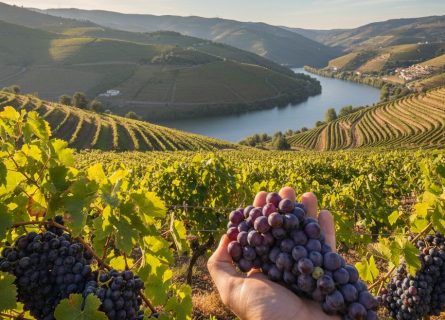
Understanding Portuguese Wine: History, Regions & Traditions
November 20, 2025
Explore the exceptional qualities of Portuguese wine, highlighting unique blends and the elegance of native grape varieties.
By: Barnaby Eales / Last updated: October 28, 2025
On top of limestone cliffs at Lagos, I walk through the ochre clay-schist soils of Falésia (Vineyards of the Cliff), a new generation Algarve producer. Falésia makes luminous, terroir-driven wines with a saline edge. The sea is never distant in the Algarve. Henry the Navigator sailed from here during the age of discovery. Now, producers across the region are rediscovering and reshaping the lost wine identity. In this sun-blessed land of orange, lemon, fig, olive, almond, and carob trees, vineyards have returned. The number of producers has nearly doubled to 60 over the past 10 years. Production, at two million litres in 2024, has also doubled since 2016.
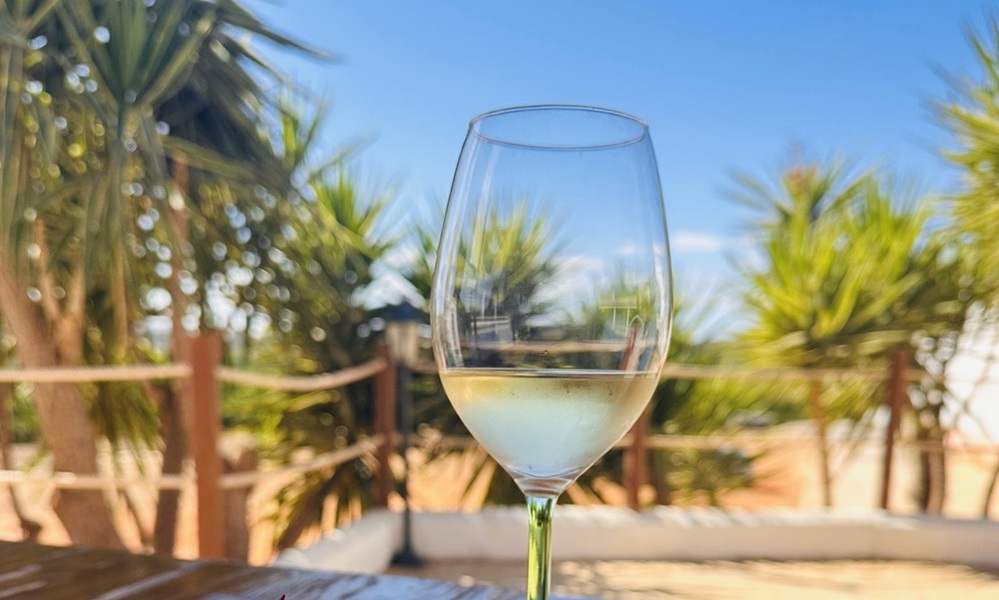
Until recently, the Algarve region’s wine cooperatives produced heavy, classic reds. Now, investors from across Europe are making vastly improved Quinta single estate wines. Options include lighter blends and single-variety wines, with freshness and sometimes distinctive tropical notes. The revival of the Algarve’s own Negra Mole (Soft Red), which resembles Pinot Noir, has inspired new wine styles: sparkling, blanc de noirs, rosé, and orange.
Alongside easy-drinking ‘swimming pool’ wines, amphora and barrel-aged Reservas appear. Phoenicians, Romans, and Arabs shaped local viticulture. The region’s name comes from Al-Garb, Arabic for The West, meaning west of Al-Andalus, or Andalucia.
In the 20th century, the Algarve became known for golf. Real estate growth often destroyed vineyards. A warming, dry Mediterranean climate—where October temperatures can exceed 30°C (86°F)—has not halted the wine revival. Tourism is growing, with 5.2 million visitors in 2024.
On my first return to Morgado do Quintão since 2018, I witnessed how much Algarve wines have improved. The estate is a ‘heritage farmstead’ offering cultural immersion. Lunch includes small, contemporary local dishes under a 2,000-year-old olive tree. I enjoy the finesse of the best new wave Algarve wines. The various Negra Mole expressions are light, vibrant, and fresh. The juicy red has no dry tannins. The estate’s cottage accommodation, like their wines, is luxuriously simple.
Owner Filipe Vasconcellos reports 20,000 visits last year. He plans to expand with more cottages. To promote sustainable tourism, he says, “We’re raising prices. We want visitors who truly want to be here.”
On my first visit, I met Joana Maçanita, the estate’s consultant winemaker and a key Algarve Renaissance figure. She crafts light, precise Palhete and Clarete (co-fermented red and white) wines. Her low-intervention approach and regenerative viticulture stand out.
Discover more: Morgado do Quintão
Maçanita also consults at Cabrita Wines, a contemporary producer focused on texture and mouthfeel. Cabrita champions Negra Mole, a rare grape known for its light color and low alcohol. Its bunches can show red, pink, and white skins. Cabrita’s commitment to vinous heritage comes through in elegant expressions of this grape, both white and red. A barrel-aged blanc de noirs sparkling wine tingles on the tongue. Negra Mole is versatile, well-suited to current trends and a changing climate. Its strength lies in alcohol and disease resistance, not acidity.
Discover more: Cabrita Wines
Known as the Left-hander’s estate. The estate bustles. Guests sit at convivial, Celtic-inspired round tables on a spacious terrace. The blue sea looms in the distance. Canhoto means left-hander; several in the family are left-handed, and toasts are raised with the left hand. Esquerdina—meaning leftie—is their popular white blend. Guests who help with the harvest are told not to pick grapes with their right hands. This boutique producer does not use synthetic chemicals and advocates for biodiversity. The winery values energy efficiency and collects and recycles rainwater. Wines are simple and well-balanced, with occasional experimentation. One example is orange wine made partly in a globe. When visiting, try Grandma’s comfy chair facing the barrels.
Discover more: Quinta da Canhoto
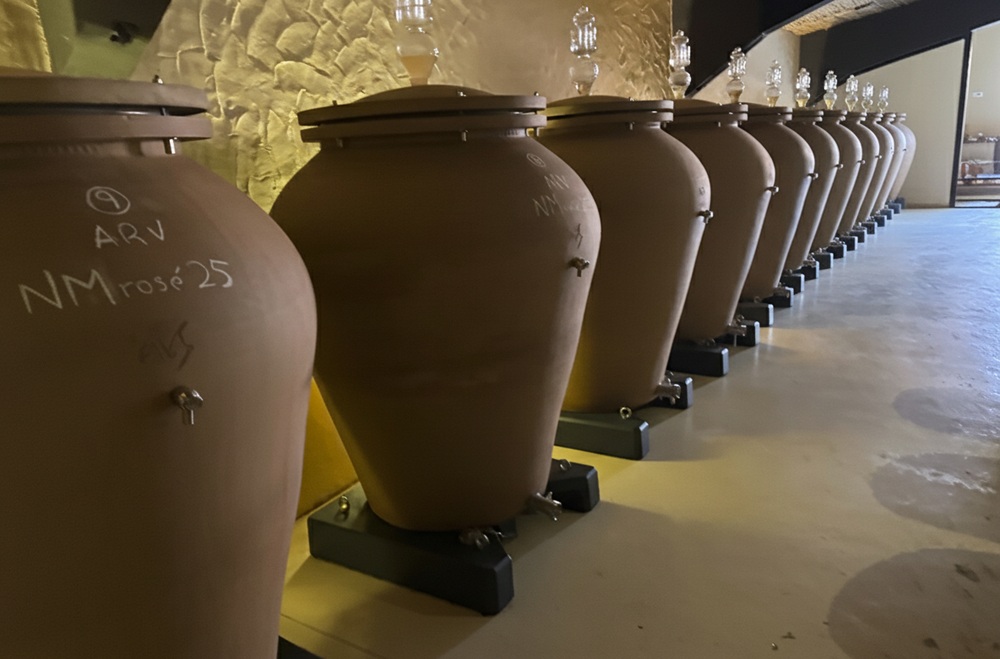
As the Algarve Wineries develop and improve their visitor offerings, Arvad is a relative newcomer making waves in Algarve wine. The estate sits on a hill near the historic town of Silves. It’s spectacular views overlook a bend in the River Arade. Arvad takes its name from the Phoenicians, who first sailed up the river with amphorae, clay pots. The producer uses 23 Sicilian amphorae to make wine under the guidance of oenologist Bernardo Cabral. From the river, electric buggies bring visitors to the winery and a ‘safari-like’ tasting room where a DJ plays vinyl at sunset.
In a deal with Arvad, the Memmo hotel group is building a new underground €10 million hotel at the vineyard (Opening 2027). It will have 42 rooms overlooking the river. Arvad’s owner, who has also embraced Negra Mole, has planted more vineyards in nearby Alvor under the Uca Violinista brand. The brand takes its name from a peculiar local crab with one claw much larger than the other. Around 400,000 bottles of wine will come on stream next year.
Discover more: Arvad
Wine tourism is taking on further new strides, as reflected by the ambitious producer Quinta do Barranco Longo, where a futuristic space-age winery is under construction. Owner Rui Virginia wants to go beyond tastings and incorporate education, cooking classes, and cultural activities. He also plans to offer excursions to create a community wine hub. Plans for the 1,500m2 bottle-shaped visitor’s centre, opening in 2027, include an underground cellar, a tasting room, and a shop. If the Algarve was once predominantly red wine country, Quinta do Barranco Longo’s production now reflects the new contemporary Algarve scene. Today, 75% of its production is white and rosé wine made from its own grapes, including Arinto, grown on clay-limestone soils.
Discover more: Quinta do Barranco
The Algarve wine renaissance has attracted big Portuguese producers from outside the region, including Casa Santos Lima. It now has 60 hectares of vineyards in the eastern Algarve, making it the region’s biggest producer. Based in Tavira, the region’s most charming town, Casa Santos Lima’s new wine bar and tasting facility is called Al-Lagar. The beautifully refurbished, spacious 19th-century stone olive mill hosts wine tastings, private events, and concerts. Algarve wines include refreshing whites, a bright, enticing sparkling wine, and a still Negra Mole. Local wines and those from six other Portuguese regions are sold by the glass and by the bottle. See here for wine tourism tastings:
Discover more: Al-Lagar
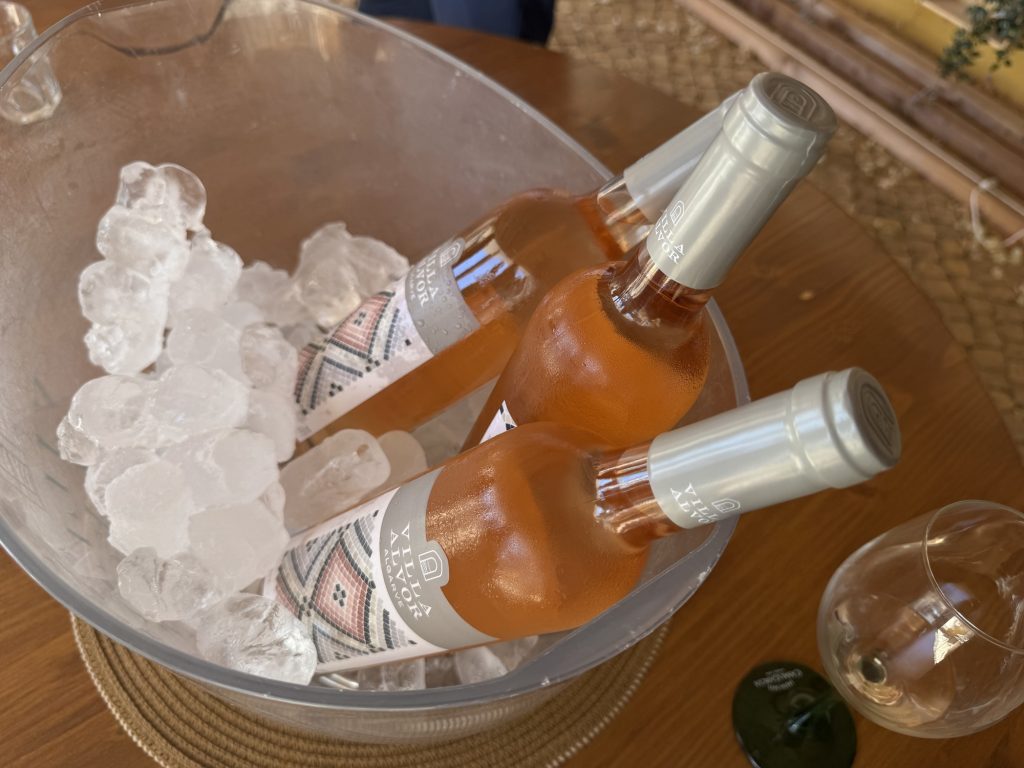
Back in 2019, when Martim Guedes, Co-CEO of Alvor’s owner Quinta da Aveleda, informed me of his Algarve vineyard acquisition, Villa Alvor. He compared the Algarve to Provence. The two regions are similar in climate, soils, and terroir, with vineyards planted between the sea and the Monchique mountains. Villa Alvor’s immensely inviting dry rose and its youthful expression of Negra Mole have hit the right notes. The names Villa (of Roman origin) and Alvor (of Arabic origin) reflect the connection between these two cultures. Gastronomy is a focus here too, with brightly coloured contemporary versions of Portuguese and Algarvian cuisine. Plans are afoot to enlarge wine tourism facilities.
Discover more: Villa Alvor
Highlighting current investor appetite in the Algarve wine business, Portuguese and Irish business partners acquired producer Quinta dos Vales, including its outdoor art sculptures dotted around the estate, from its previous owner, a German banker, in 2024. The estate located in Estombar focuses on creating added value through tourist accommodation, arts, and wedding receptions. It provides winemaking experiences, enabling tourists to do bottle and barrel blending, and the possibility of renting vineyards so they can make their own wine: a 650 m2 plot of land can make 300 bottles of wine. Wines are predominantly red, made in classic styles (unfortunately, the previous owner ripped out Negra Mole vines in 2007), fermented with industrial yeasts, and aged in oak staves and barrels. The portfolio includes older vintages. It is hoped that the estate’s new young winemaker, Rita Xavier, will adopt a fresh approach to garner further interest in the wines.
Discover more: Quinta dos Vales
In the Algarve, classic dishes have been reinvented. Championing the gastronomy trend is the lively Sanleti Tapas & Vinhos restaurant in Portimao, which pairs super fresh cuisine with the new wave Algarve wines; Algarve Gamba da Costa and tender Octopus – the Algarve has its very own Octopus capital, a village called Santa Luzia – is paired with equally tantalisingly fresh and bright wines of Herdade Barranco do Vale, one of the new generation producers making wine from local grapes grown on schist soils.
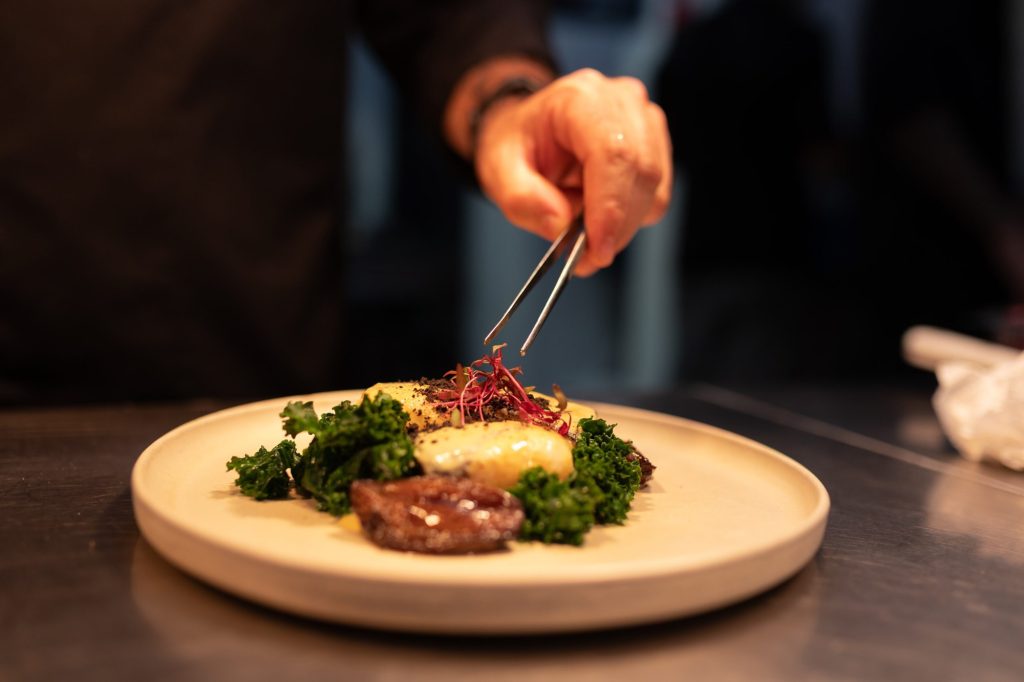
Contemporary Algarve and Alentejo dishes served at Villa Alvor are brightly coloured, reflecting local sub-tropical flowers. Restaurateur Rogerio Malheiro, owner of the Gaspacho & Migas restaurant in Lagoa, cooks for vineyards like Alvor and Quinta dos Capinhas estate, where his team employs the sous vide cooking technique, in which food is vacuum-sealed and cooked in a low-temperature water bath.
Malheiro says,
“We’re all about slow cooking; stocks, for instance, are created over six days,”
At Villa Alvor vineyard, Sea bass Ceviche is served with Kimchi Emulsion One with Burrata. The Seared Tuna Tataki features a velvety crab sauce that pairs well with lighter wine styles. This shows how Negra Mole can be served with fish, meat, or vegetable dishes, making it a good fit for both European and Asian cuisines.
At Gaspacho & Migas, rather than use traditional salted cod, which Malheiro says has “too strong a flavor,” he pairs Quinta do Barranco Longo’s exuberant white blend of Arinto and Encruzado with fresh cod from Iceland.
My return to the Algarve has revealed the extent of the evolution in quality and wine production styles. Once frowned upon, Algarve wines have vastly progressed, placing the region firmly on Europe’s map of wine. The Algarve’s wine renaissance is increasingly dynamic, with producers experimenting with wine styles, replanting Portuguese and Algarve native grape varieties, and adopting climate-adaptation measures.
Wine tourism facilities and infrastructure are growing. The Algarve’s wine revival is helping to revitalise the identity of a Southern European region that’s increasingly becoming a destination to visit in the milder months of Spring and Autumn, beyond the hot summer period.
If you would like us to customize an exclusive luxury tour, contact us and let us know your travel plans. We offer luxury food and wine tours for private groups of a minimum two guests. In addition, all of our private, chauffeured tours are available year-round upon request.

